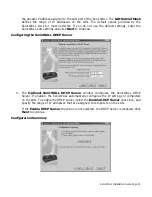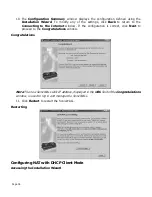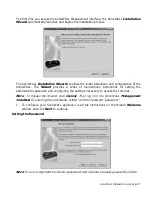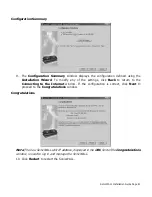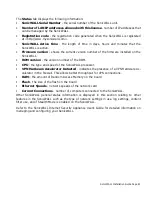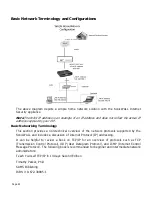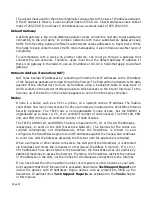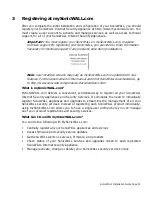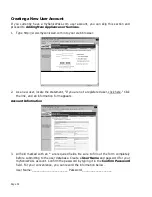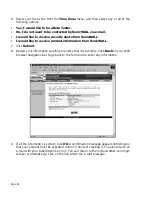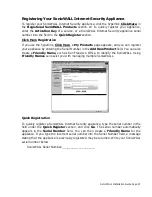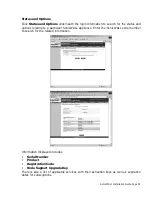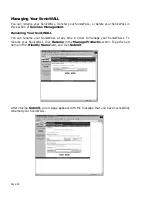
Page 46
•
HTTP
- HyperText Transfer Protocol (HTTP) is a widely used protocol to transfer
information over the Internet. Typically, it is used to transfer information from Web servers
to Web browsers.
•
UDP
- User Datagram Protocol (UDP) transfers information using virtual ports between two
applications on a TCP/IP network. Slightly faster than TCP, it is not as reliable.
•
DNS
- Domain Name System (DNS) is a protocol that matches Internet computer names
to their corresponding IP addresses. By using DNS, a user can type in a computer name,
such as www.sonicwall.com, instead of an IP address, such as 192.168.168.168, to access
a computer.
•
DHCP
- Dynamic Host Configuration Protocol (DHCP) allows communication between
network devices and a server that administers IP numbers. A DHCP server leases IP
addresses and other TCP/IP information to DHCP client that requests them. Typically, a
DHCP client leases an IP address for a period of time from a DHCP server which allows a
larger number of clients to use a set pool of IP addresses.
•
WINS
- Windows Internet Naming System (WINS), used on Microsoft
®
TCP/IP Networks,
matches Microsoft
®
network computer names to IP addresses. Using this protocol allows
computers on the Microsoft
®
network to communicate with other networks and computers
that use the TCP/IP suite.
•
HTTPS
- Secure HyperText Transfer Protocol (HTTPS) is a protocol to transfer information
securely over the Internet. HTTPS encrypts and decrypts information exchanged between
a Web server and a Web browser using Secure Socket Layer (SSL).
•
SMTP
- Simple Mail Transfer Protocol (SMTP) is used to send and receive e-mail messages.
Typically, SMTP is used only to send e-mail while another protocol, POP3, is used to receive
e-mail messages.
•
POP3
- Post Office Protocol 3 (POP3) is used to receive e-mail messages and storing
messages on a server, referred to as a POP server.
•
ICMP
- Internet Control Messages Protocol (ICMP) reports errors and controls messages
on a TCP/IP network. PING uses ICMP protocol to test if a network device is available.
IP Addressing
To become part of an IP network, a network device must have an IP address. An IP address is
a unique number that differentiates one device from another on the network to avoid confusion
during communication. To help illustrate IP addresses, the following sections compare an IP
address to the telephone numbering system, a system that is used every day.
Like a phone number with its long distance “1” and area code, an IP address contains a set of
four numbers. While we separate phone number components with dashes, for example 1-408-
555-1212, IP address number components are separated by decimal points or dots (called
dotted decimal notation), for example 123.45.67.89. Because computers use a binary number
system, each number in the set must be less than 255.
Summary of Contents for GX 250
Page 1: ...SONICWALL Installation Guide...
Page 51: ...Page 50...




